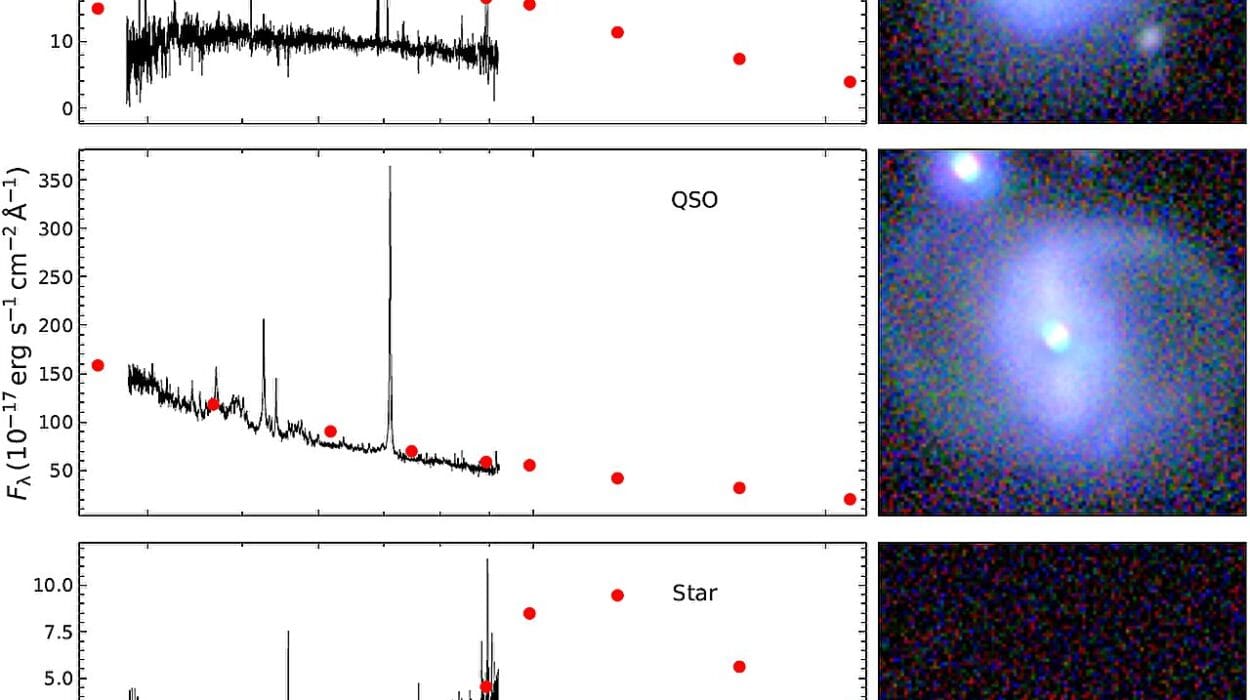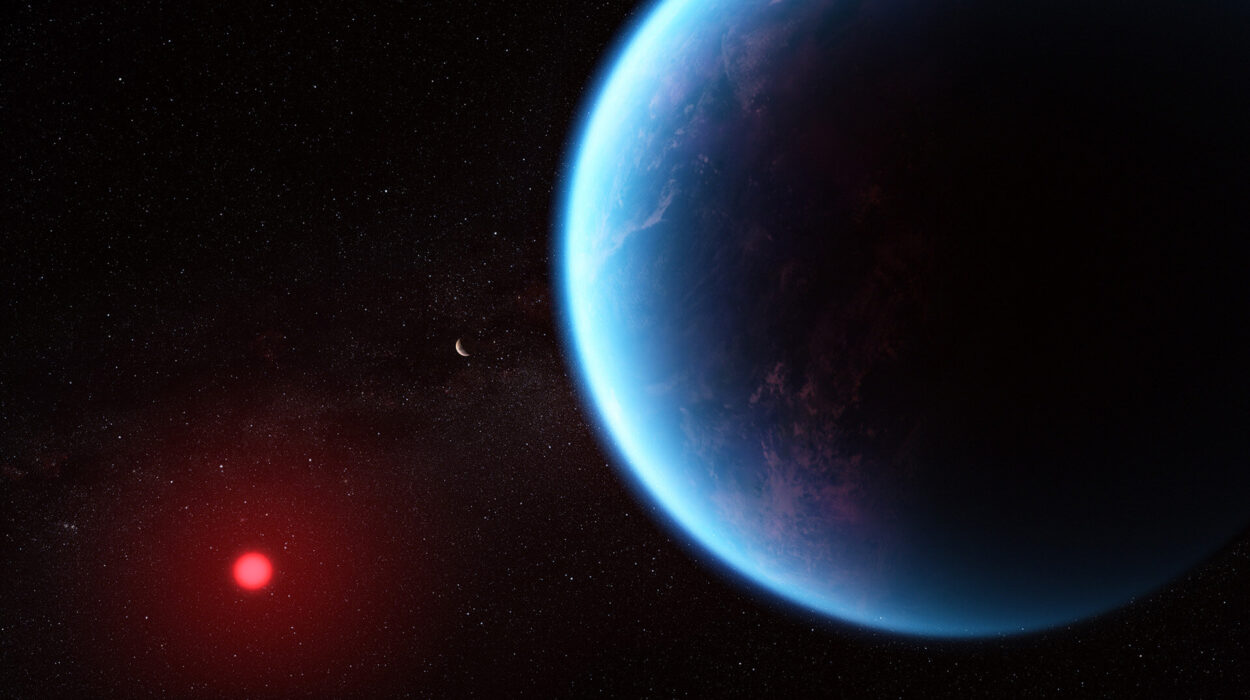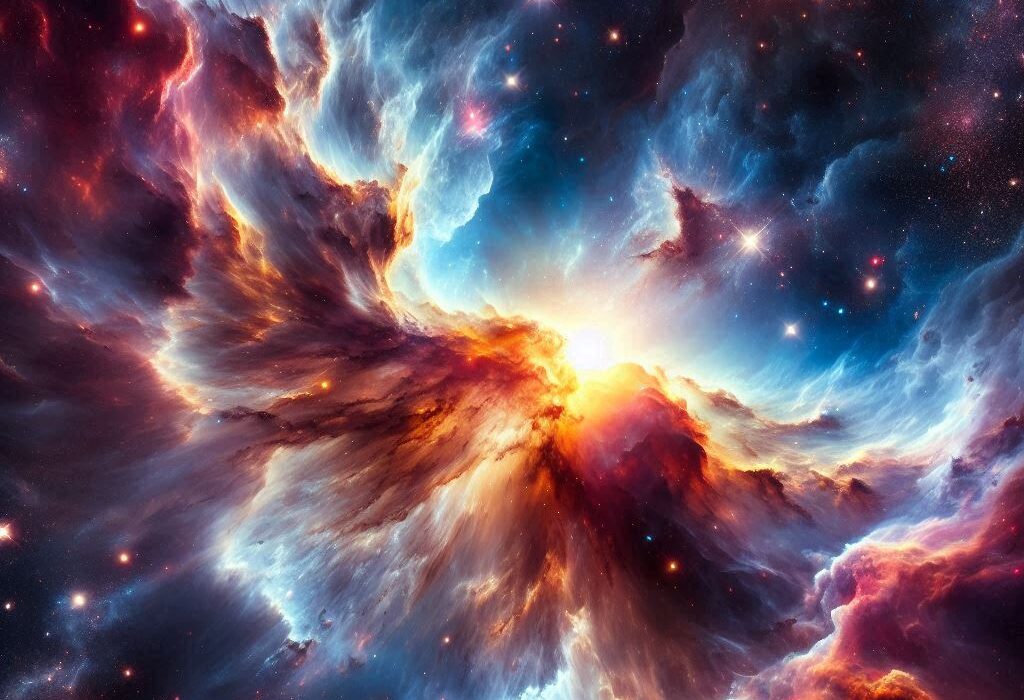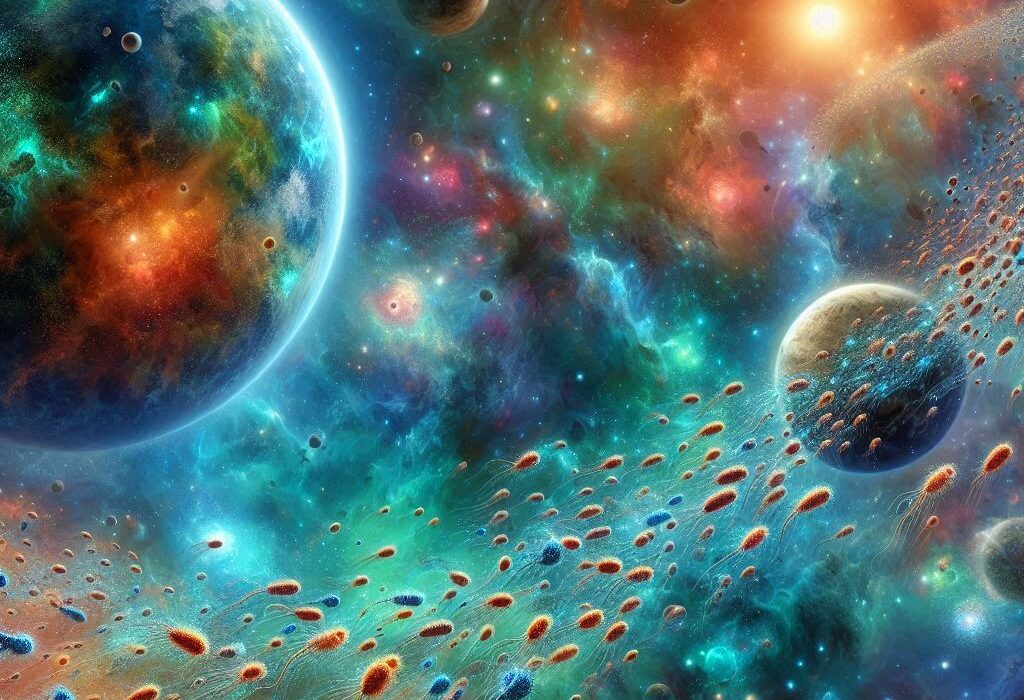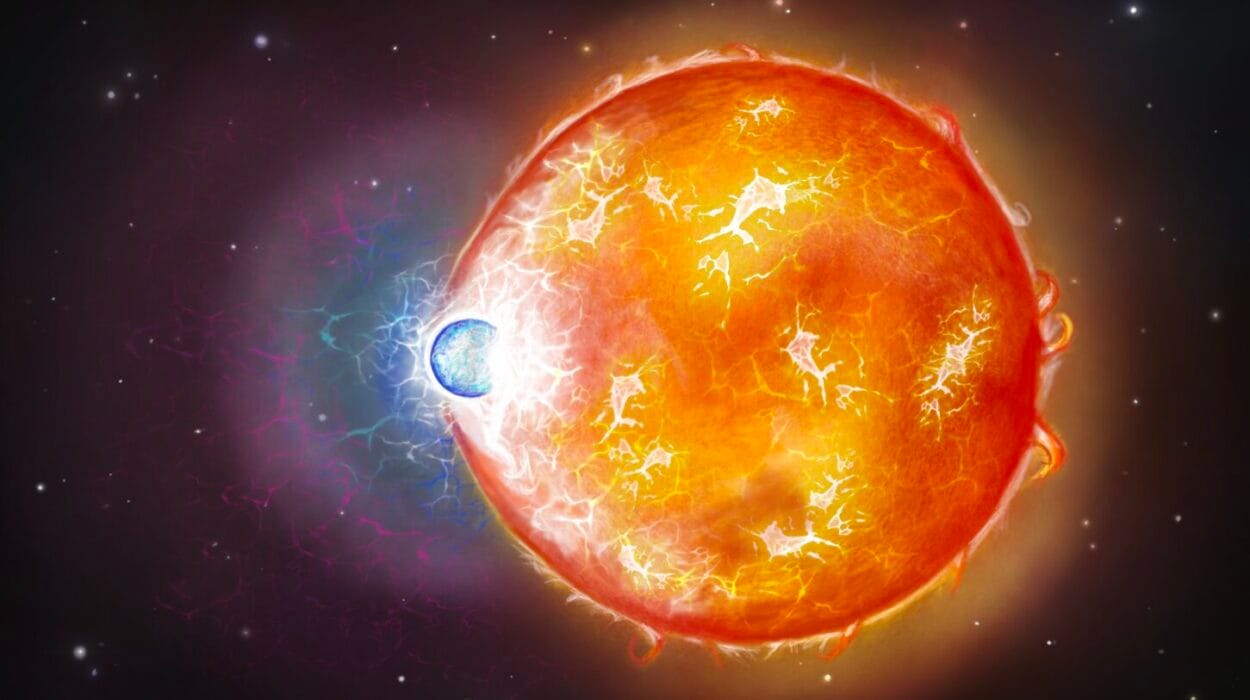For nearly three decades, the story of our universe has been told with one astonishing twist: that the cosmos, far from slowing down, is expanding faster and faster. It was a revelation that upended everything we thought we knew. In 1998, by studying distant supernovae, astronomers discovered that galaxies were speeding away from one another at an ever-increasing rate—an observation that led to the idea of dark energy, a mysterious, invisible force driving this acceleration. The discovery earned the 2011 Nobel Prize in Physics and reshaped cosmology.
But now, a new and remarkable study published in the Monthly Notices of the Royal Astronomical Society has shaken that foundation. The findings suggest that the universe’s expansion may have already begun to slow, rather than continuing to accelerate endlessly. If confirmed, this could be one of the most profound shifts in our understanding of the cosmos since the discovery of dark energy itself.
The Study That Stopped the Universe—Literally
The study, led by Professor Young-Wook Lee of Yonsei University in South Korea, challenges a central tenet of modern cosmology. His team’s analysis indicates that the universe is no longer in an accelerating phase—it may, in fact, be decelerating. “Our study shows that the universe has already entered a phase of decelerated expansion at the present epoch,” Professor Lee explained. “If these results are confirmed, it would mark a major paradigm shift in cosmology since the discovery of dark energy 27 years ago.”
This new research doesn’t merely tinker at the edges of the standard cosmological model—it calls into question the very nature of dark energy, the mysterious force thought to make up nearly 70% of everything that exists.
A Universe Built on Light: The Supernova Connection
The key to understanding cosmic expansion lies in some of the universe’s most spectacular explosions—Type Ia supernovae. These stellar detonations, which occur when a white dwarf star in a binary system collapses and explodes, have long been used as “standard candles.” Their consistent brightness allows astronomers to measure vast cosmic distances.
In the 1990s, when astronomers observed that distant Type Ia supernovae appeared dimmer than expected, they concluded the universe’s expansion was accelerating. It was a discovery that changed everything.
However, the Yonsei team’s work suggests that these supernovae are not as standard as once believed. Their brightness, it turns out, depends on the age of the stars that produced them. Supernovae born from younger stars are slightly fainter, while those from older stars are brighter—even after standard calibration.
When the Stars Tell a Different Story
By analyzing data from over 300 host galaxies, Professor Lee’s team found overwhelming evidence—at a confidence level of 99.999%—that this stellar age effect significantly skews the apparent brightness of distant supernovae. In other words, the dimming once attributed entirely to cosmic acceleration may instead be partly due to the stellar evolution of the galaxies themselves.

Once this bias was corrected, something extraordinary happened: the data no longer supported the standard cosmological model known as ΛCDM (Lambda Cold Dark Matter), which assumes a constant form of dark energy. Instead, the corrected data aligned much more closely with results from the Dark Energy Spectroscopic Instrument (DESI) project, as well as measurements of baryonic acoustic oscillations (BAO)—the faint ripples in the distribution of galaxies, often described as the “sound waves” of the Big Bang.
Both the corrected supernova data and the BAO/CMB (cosmic microwave background) results pointed to a new possibility: dark energy is not constant. It evolves—and may even weaken—over time.
A Universe Losing Its Push
This finding turns the prevailing cosmic narrative on its head. Rather than accelerating forever, the universe might already be slowing down. The combined data from supernovae, BAO, and CMB analyses all indicate that the universe’s expansion is decelerating today—a revelation that stands in stark contrast to decades of consensus.
Professor Lee explained that previous DESI analyses, based on uncorrected supernova data, concluded the universe was still accelerating but would begin slowing in the distant future. The Yonsei team’s corrected analysis, however, paints a different picture: the transition to deceleration has already begun.
This subtle but profound shift suggests that dark energy is far more dynamic than previously thought, perhaps even fading as the universe ages.
The Hubble Tension and the Dark Energy Puzzle
This discovery could also help resolve one of modern cosmology’s most vexing problems—the Hubble tension. This refers to the persistent discrepancy between measurements of the universe’s current expansion rate (the Hubble constant) when derived from nearby galaxies versus early-universe observations of the CMB.
If dark energy is changing over time, as the new research suggests, it could explain why different epochs of the universe yield different values for the Hubble constant. A time-evolving dark energy model would bridge the gap between the early universe and the present day, bringing long-sought harmony to conflicting measurements.
It’s a tantalizing idea—that the very mystery that once fractured cosmology might now be the key to unifying it again.
The Tools of Tomorrow: Vera C. Rubin Observatory
To test their findings further, the Yonsei team is conducting what they call an “evolution-free test,” using only supernovae from young, coeval host galaxies—stars born at roughly the same time—to remove the confounding effects of stellar age. Early results already support their main conclusion of a slowing universe.
But the real game-changer may come from the Vera C. Rubin Observatory, perched high in the Chilean Andes. Equipped with the world’s most powerful digital camera, this observatory is designed to survey the entire southern sky every few nights, discovering tens of thousands of new supernovae each year. Within the next five years, astronomers expect to have unprecedented data on the ages and properties of these exploding stars—data that could confirm or overturn the Yonsei team’s bold claims once and for all.
“The Rubin Observatory will revolutionize supernova cosmology,” said Professor Chul Chung, a co-lead author of the study. “With precise age measurements, we’ll be able to perform far more robust tests of cosmic expansion and the true nature of dark energy.”
Rewriting the Cosmic Timeline
For nearly three decades, the story of dark energy has been one of endless acceleration. According to the standard model, roughly 9 billion years after the Big Bang, the universe’s expansion began to speed up again after a long period of slowing under gravity’s pull. This invisible energy, making up 70% of the cosmos, seemed to act as a kind of cosmic anti-gravity, pushing galaxies apart.
But if dark energy is not constant—if it fades with time—then the story changes dramatically. The universe might have already reached its peak rate of expansion and begun to slow. This doesn’t mean galaxies are collapsing back together, but it does suggest that cosmic acceleration could be temporary, not eternal.
It’s a breathtaking thought: the universe may not be racing away forever into the cold darkness, but could be beginning its long, graceful deceleration—its first cosmic sigh after eons of expansion.
What Comes After Acceleration?
If dark energy weakens over time, several scenarios unfold. One possibility is that the universe will continue expanding but at an ever-slower pace, eventually approaching a steady state. Another, more speculative outcome is that gravity could one day regain the upper hand, gradually pulling galaxies closer again—a future far different from the “Big Freeze” once imagined.
Either way, the discovery reawakens a profound sense of wonder about our cosmic fate. The universe is not a static machine but a living, evolving entity, its expansion shaped by forces we are only beginning to understand.
The Mystery Deepens
Despite its name, dark energy remains one of the most enigmatic phenomena in science. We cannot see it, touch it, or measure it directly. Its existence is inferred only from the way it influences galaxies and the cosmic web. For something that makes up the majority of the universe, it remains a complete mystery.
Last year, early results from the DESI project in Arizona hinted that dark energy might have changed over time. The Yonsei study now strengthens that claim, providing independent evidence that dark energy may not be a fixed, cosmological constant after all.
This is how science evolves—not through final answers, but through courageous questions that challenge our most cherished assumptions.
The Human Story Behind the Stars
In some ways, this is more than a scientific discovery—it’s a philosophical one. The idea that the universe might be slowing down reminds us that everything, even the cosmos itself, has a rhythm: beginnings, accelerations, slowings, and transformations.
For centuries, humans have looked to the sky for meaning, searching for permanence in the stars. Yet physics continually reveals that change is the only constant. The same principle that governs the flicker of a dying star may also govern the destiny of all existence.
A New Chapter in Cosmology
If these findings are confirmed, the implications will be enormous. The foundations of modern cosmology—dark energy, the ΛCDM model, and our understanding of the universe’s fate—will all need to be rewritten. It could usher in a new era of physics, one in which dark energy is no longer a mysterious constant but a dynamic, evolving field woven into the fabric of spacetime itself.
Perhaps, in the end, the universe’s slowing expansion is not a loss of momentum, but a deepening of mystery—a reminder that we are still in the earliest chapters of understanding the grand story of existence.
The Universe, Pausing for Breath
So, has the universe begun to slow down? Maybe. Or maybe it’s revealing a new layer of its complexity, a rhythm too vast for us to fully hear just yet. What is certain is that the cosmos has surprised us once again.
And perhaps, in that slowing—if it is real—we can glimpse something profoundly human. The universe, after all, is not separate from us. Its story is ours. Every question we ask of it, every mystery we uncover, is a reflection of our own endless curiosity, our own desire to understand the infinite.
In the silence between galaxies, the universe may indeed be pausing—just long enough for us to listen.
More information: Junhyuk Son et al, Strong Progenitor Age-bias in Supernova Cosmology. II. Alignment with DESI BAO and Signs of a Non-Accelerating Universe, Monthly Notices of the Royal Astronomical Society (2025). DOI: 10.1093/mnras/staf1685

